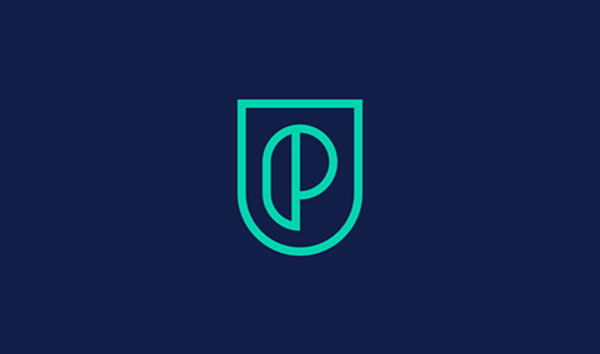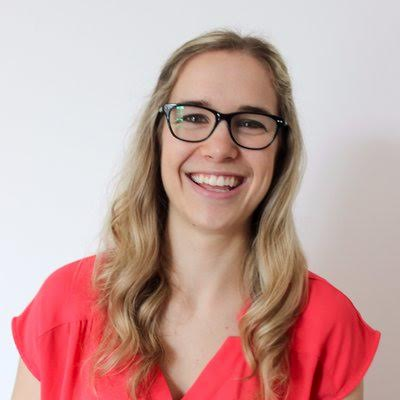
By: Krista Krebs
This past week, I had the opportunity to be a featured speaker for Product School’s weekly AMA, or “Ask Me Anything,” with their community of over 21,000 current and aspiring product managers. Usually the featured speaker is a Product Manager, so I was happy to share my human-centered design approach as a Product Designer with their community.

I have been a big fan of Product School for a while because it provides tremendous opportunity to learn from people who are building incredible products every day. AMAs have included others from companies like Spotify, Airbnb, Google, Microsoft, and Instagram, and I was thrilled to be a small part of placing UPMC Enterprises in the same context and conversation.
The hour-long AMA went by fast, focusing on everything from design strategy to the healthcare industry. Even after the event ended, questions continued to come in over private message and LinkedIn, further proof that this group of engaged community members are committed to improving UX for their customers.
In case you missed it, here are highlights from the Q&A. Still have questions? Feel free to reach out to me on Twitter or connect on LinkedIn to continue the conversation!
Q: As a Product Manager myself, I often have to balance business rules with UX. Unfortunately, when resources get tight there is a mentality of “best we can do” – which is not always the best for the user. How have you worked to ensure development resources are optimized while you design and therefore improve the “best we can do” approach?
A: Thanks for the question! My experience with developing apps has helped a great extent because I can empathize with the engineers and understand their constraints, and also what details they need to do their job efficiently. There are many tools out there that make designer-developer handoff easy, where engineers can grab the specs and export assets without having to guess the implementation details based on a static image. As far as balancing business rules with UX, good UX, will equate to happy users, and positive user reviews on the app store, which will influence good business and business rules. It’s important to remember we are designing and building for people to feel an emotion, more than we are building for people to do a certain task. The tasks and things your app does leads to one or many emotions, so I challenge everyone to find those and use them as your guide to build something people love!
Q: One of the biggest issues I’ve run into with my team is balancing “Good Design” and desired functionality. When it comes down to it, how do you balance the two when designing your products?
A: If by “Good Design” you mean strong visual design, then my understanding of this question is really “How do we balance between strong visual design and desired functionality?” A good user experience is a combination of the two. Sometimes there are situations where the visual design will be compromised for a better user experience, but this is always the correct solution. Good product design is focused on solving user problems, and if a strong visual design does not solve the user’s problem, then it isn’t “good design” it’s “bad design,” no matter how pretty it looks. On the other hand, many times a good designed user experience can be compromised because the ideal, or desired functionality, is not yet feasible with different integrations and other technological constraints. On our design team, we really try and strive for ideal, and understanding our users, but also what those technological constraints are. Then we weigh level of effort and time to market with what will be adding the most value in the short and long term. Design is a collaborative sport and it will most likely involve compromise, because although the user may want ideal, they may not want ideal in 2 years.
Q: From a designer’s perspective, where do you draw the lines on collaborating during user story creation (are you ever writing “Given – When – Then” acceptance criteria?), participating in sprint prioritization, and being a resource with front-end development?
A: Yes, to all three! I have written “Given – When – Then” acceptance criteria in the past, especially when I understand the interactions the best. Although it was not a primary focus of my role, I always love to have the attitude of helping translate design any way I can. We are all one team with the same focus, so it shouldn’t matter who is doing what as long as it’s being communicated effectively. As far as sprint prioritization, user research helps us understand what value the features will add. And with front-end-development, my past developer experience has afforded me the ability to be a resource to front-end. By keeping up with my skills in that area, it helps me understand constraints, make sure my designs are feasible, and also following best practices per platform. I don’t currently hop in and code myself, but I have provided snippets here and there to make handoff as smooth as possible. I am cautious not to step too far into front-end development because I don’t have an advanced skillset, and I wouldn’t want to add inefficiency to my team’s process. But help when needed? Absolutely.
Q: As an engineer who has worked in many partnership integrations, what are some of your favorite visual tools you use that you help your development team visualize the intended business outcomes and customer journeys?
A: There are many tools that can help you do this, but to me the tool you use isn’t as important as the story you’re telling. It is always imperative when introducing a feature to start with explaining why the heck we are doing it in the first place. Often, I have used real quotes from users, and data trends to explain what problem we are solving. It is those tools to me that really tell the story for you, no matter what medium you choose. This way engineers can be brought in early and understand the vision and contribute to the conversation. Customer journeys are also great because they demonstrate your user’s experience outside of using your product, which will connect what tasks they do to an emotion and/or motivation. This leads to deeper empathy to understand the reasons behind why your customers behave the way they do.
Q: I would love to hear tips on transitioning into health care from another industry in a product role since hiring in design and product sometimes leans on finding an “SME” with transferable knowledge. How did you transition to your UPMC role? Did you feel like you had a steep learning curve once you started?
A: I just recently transitioned from retail about two months ago, so I am still learning about the industry. I foresee that I’ll be learning for months to come, as it is both vast and complex. The tips I have are to talk to as many people as possible and listen intently. By hearing terms, system challenges, and scenarios, over and over, one can start to learn and glean information quickly. Although I am not a health care expert, luckily UPMC is already filled with many, and I can bring my knowledge about user experience design, user research, etc., and be a great addition to many conversations. But yes, gaining domain knowledge quickly is a challenge, and will only make me a better designer and team member.


